Late in 2015 Holga production ceased. A sad fate for an iconic plastic camera that helped drive the Lo-Fi photography movement and remains much beloved today. Luckily you can still buy ’em brand new.

But how does the 120N (the closest to the original 80’s Holga) fare today and compared to the obvious rival product from Lomography, the Diana F+.
The first Holga (120S) was designed in 1981 and was intended as a cheap to make model for the burgeoning Chinese consumer market. The choice of 120 may have made sense initially but not surprisingly Chinese consumers ended up preferring 35mm as time went on. Holga was saved however when it was picked up in the west as an artistic camera with Lo-fi qualities in some ways the spiritual successor to the 60’s Diana cameras and the 70’s color optical lens ones. The fact that the simple plastic meniscus lens is soft and prone to focal plane and chromatic aberrations and vignetting are seen as a plus as are the reported tendencies for light leaks (mines thankfully doesn’t)
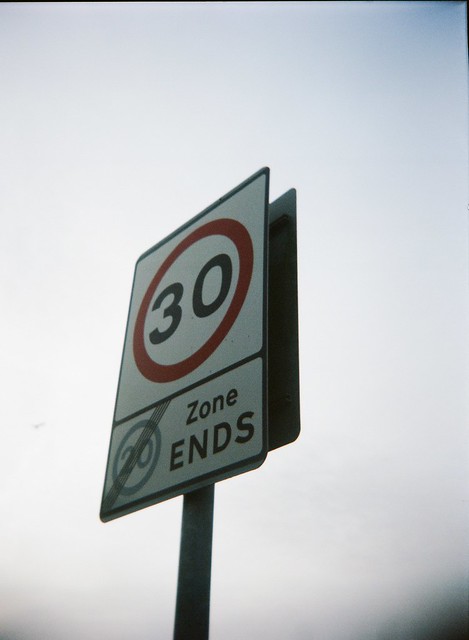
Holga Specs
- Lens: 60mm 1:8 Plastic
- Focus: 4 Zone/Scale
- Metering: None
- Aperture: f/8 & f/11
- Shutter speeds: 1/100 + B
- EV (100ISO) : 13-14
- Filter: Push on
The 120N is the most basic of the plethora of late 120 Holgas and is the closest to the original with no built in flash, plastic lens and limited settings and acts as the base for most 120 models. And boy ! did Holga make models – a vast range including models with flash, Colour flash, pinhole, wide-angle, stereo 3D, panoramic and TLR all in a range of colours. The key distinction are models with a glass lens (these use the G designation so the 120GN is the glass lensed version of the 120N and the 120 GCFN is Glass lensed version with colour flash).
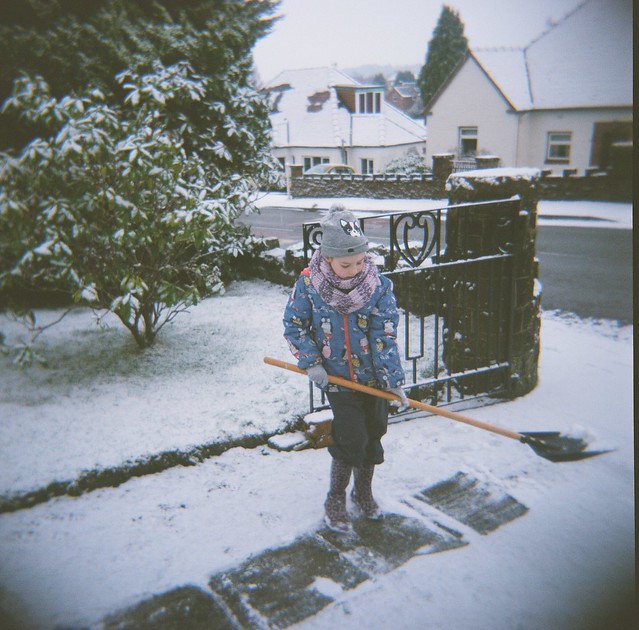
I got the black version but numerous colours exist. The black is fairly laid back and actually looks pretty good. It feels reassuringly solid. The camera if new comes with strap, lens cap and 2 film masks (6x6cm for 12 shots and 4.5x6cm for 16 shots). The camera has a hot shoe for flash & tripod point but no cable release point or timer. You have a choice of 2 aperture setting (Sunny f/11 and cloudy/flash f/8) and either N (1/100) or B (bulb) shutter setting. Focus is by 4 focus zones shown in pictograms. Those zones are 1, 2, 6 and 10+ metres. Unlike the Diana F+, it gears for 100/200 ISO film although nothing to stop you using other speeds e.g. 400 iso in winter.
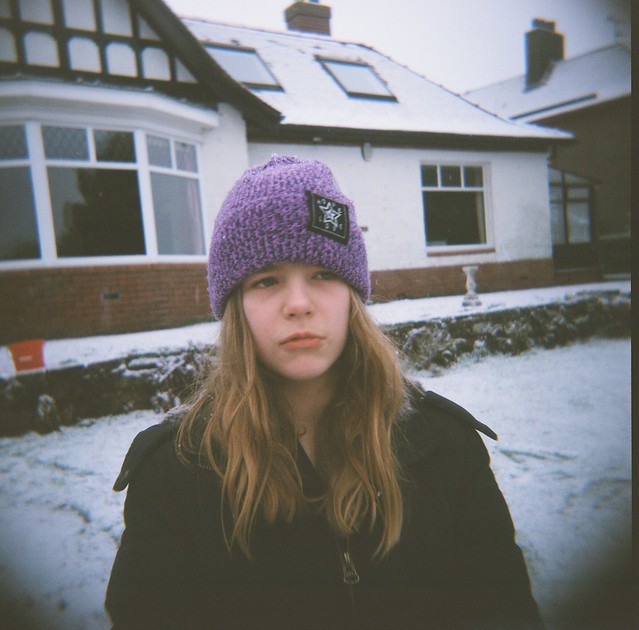
Mines didn’t light leak but you do hear tales of (usually pre 2008) cameras leaking at various points. A common leak point is around the red window which simply switches between the 12 and 16 setting by means of a slide cover. The 120N has some foam insets in the film compartment which also helps wind the film on tighter so loose spool leaks are less common. This camera is also game for easily modding to take 35mm film. There are 2 dedicated 35mm backs but I really don’t see the point and I managed pretty well doing this without them except for the fact I got a light leak where I covered the red window. The 6×6 mask makes better sense here.
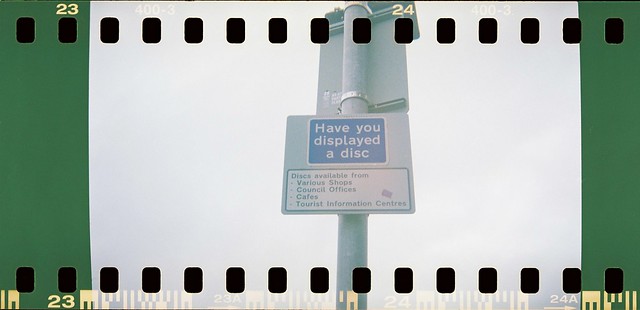
There are also a plethora of various accessories from push on filters and lenses to importantly a cable release adaptor (although last time I looked this cost more than the camera). There are also tons of DIY mods out there.
Shotwise this camera did what I though it would. Images are soft with a degree of mild pincushion distortion and obvious chromatic effects. The camera vignettes too at times in a pretty specific way. Not for folk wanting pin sharp high contrast shooting but Lo-Fi image shooters should be happy and in terms of things little to separate from the Diana F+ the obvious and similar specc’d rival. Also like the Diana there is no exposure lock meaning you can take multiple exposures easily (whether you want to or not)
The question of which is better is a hard one. Spec wise they both have their pluses and minuses but the difference is slim.
|
|
Holga 120N | Diana F+ |
| Native Film Type | 120 Roll | 120 Roll |
| Lens Length | 60mm 1:8 | 75mm 1:11 |
| Lens Type | Plastic Meniscus | Plastic Meniscus |
| Apertures | f/8 & f/11 | f/11,16,22 & f/150 (pinhole) |
| Shutter | 1/100 + B | 1/60 + B |
| Focus | 4 Zone/Scale | 3 Zone/Scale |
| Film Mask Sizes in Box |
6x6cm 4.5x6cm |
5.2×5.2cm 4.2×4.2cm 4.6×4.6cm* |
| Recommended Normal ISO |
100 ISO | 400 ISO |
| Filter | Push On | Push On |
| Cable Point | No (mod available) | No (mod available) Comes with wedge to jam shutter open |
| Flash | Standard Hotshoe | proprietary mount¹ |
| Interchangeable Lens ? |
No | Yes |
| Film Backs | 35mm & Instant | 35mm & instant |
| Tripod Point | Yes | Yes |
| Current Lowest eBay.co.uk Price² |
£20 | £26.99 |
*Mask for Panoramic setting
¹The Diana F+ flash comes with a converter to use on a hotshoe camera and one to use a hotshoe flash on the Diana
²Lowest price inc P&P evening of 8th Feb 2016
At the moment the Holga is cheaper BNIB (just) but prices are likely rise. The holga feels better made although has a worse history for actual reliability re light leaks etc. It also can take a standard flash unit out of the box and has a wider lens with 4 zones for focus. The Diana F+ however has 3 normal aperture settings plus a pinhole option if you remove the lens.The fact you can change lens makes it a system camera too so One Diana F+ body can use a host of lenses.
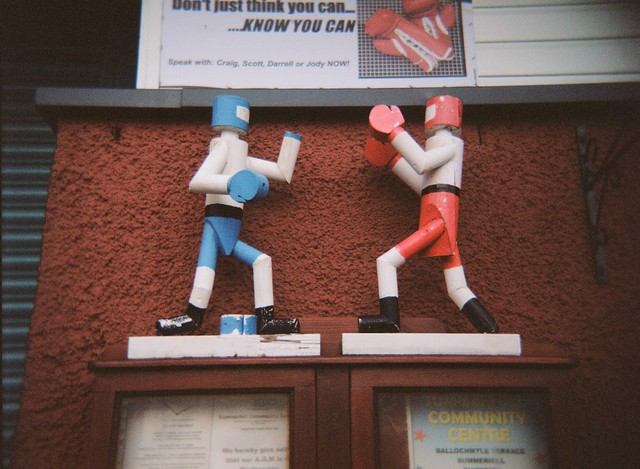
At the end of the day I suspect it will come down to which image preference and style. I also suspect cost will be an issue as Holgas are now becoming costlier new. The demise of Holga is a sad day but reasons why it has gone are legion. Firstly the rise of digital has bitten and especially where phone camera filters ape the Holga effect. The Diana F+ has bitten heavily into market share and comes withe slick lomography ‘cool’ marketing as well as being a more adaptable camera. That point is key as Holga ended up producing a bewildering array of plastic cameras in 120, 35mm and 110 formats as well as mountains of colours – perhaps they should have limited the range more.
Still for what it is I’m sad to see Holga go.
Why Buy ?
- The Lo-Fi lens
- Oddly a classic
- Before they get pricey
- Cheap at mo for new camera
Why not ?
- Limited options
- Light leak prone
What I Paid
- Paid £20 inc postage for BNIB with strap, lenscap, masks & manual on eBay
Alternatives
- Lomography Diana F+ – The remaining lo-fi 120 in production
- VUWS – 35mm plastic lo-fi high point with corking plastic lens
Helpful links
- Holga Main page at Camera-wiki.org
- Holga 120 N series Official Manual at Mike Butkus’s site
- Holga Manual by Freestyle. More upbeat & covers 120 & 35mm
- Holga Microsite at Lomography.com
- Sophie & Edmunds Holga Photopage covers hints, tips and mods
- The Holga Darkroom another blog site loaded with tips and tricks
- 120 GN review at 120studio.com

What I love about the Holga is that you can take a picture today that looks like it was taken 50 years ago.
Mechanically it’s no tank but gently coaxed it can make dreamy soft images that may become your favourites.
The best advice I can give is to use it gently yet methodically (it’s easy to forget if you’ve wound on or not). Match the film speed to the light because there’s no prizes for being horribly underexposed.
*My Holga 120N never light-leaks but I tape the holding clips on the sides so the back door doesn’t fall off ; )